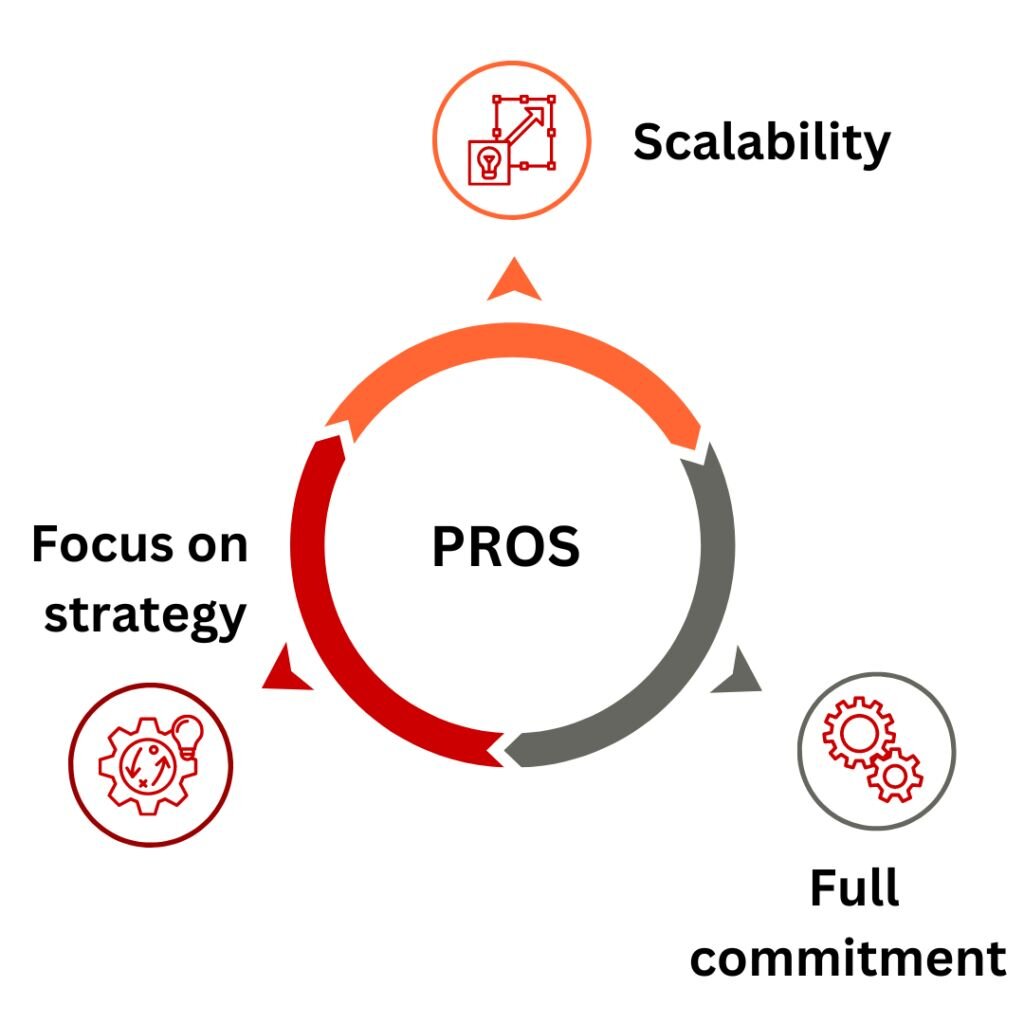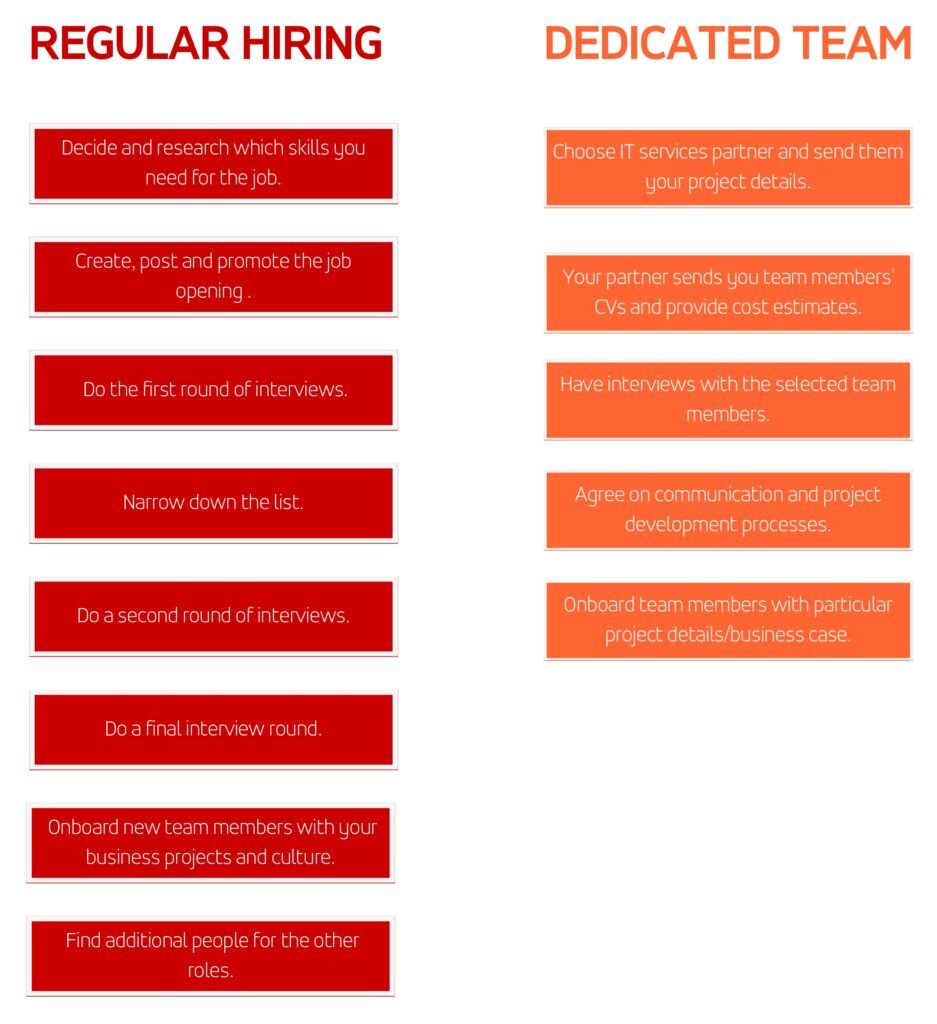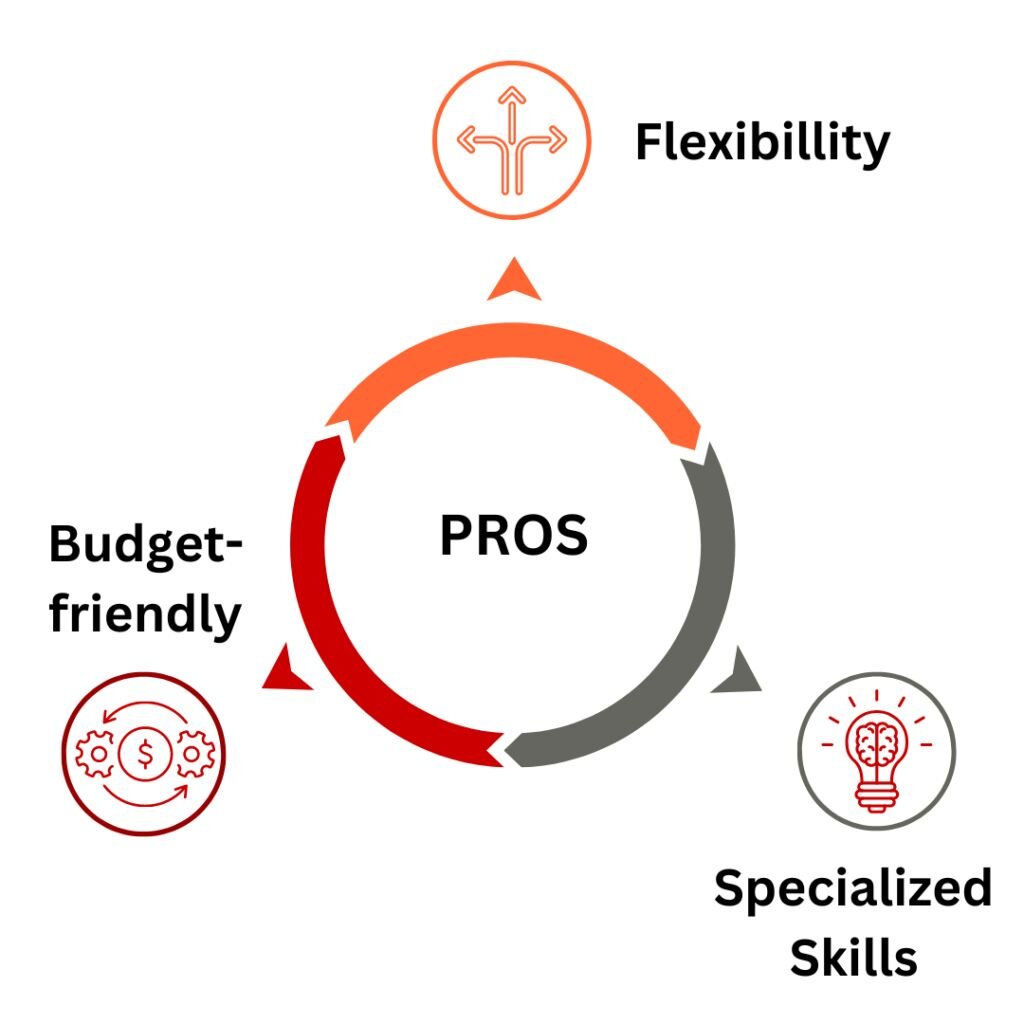Dedicated Software Development Teams vs Staff Augmentation
07.05.2024
Staff augmentation and dedicated software development teams are two popular approaches to successfully outsourcing your IT services. In this blog post our aim is to guide you into selecting the best outsourcing model for your business needs whether it is one or the other, or even a combination of both.
Difference between staff augmentation and dedicated software development teams?
The difference between staff augmentation and a dedicated development team model is not a clear one. Many outsourcing benefits such as scalability, specific skill sets, and else can be attributed to either. When deciding what might best suit your needs you have to consider your budget, timeline, project requirements, and the complexity of the project scope. Still, it is ok to accept that it is not all black and white and you can go for a hybrid model that offers the best of both worlds.
4 Cases for building a dedicated software development team
Which one to choose?
Staff augmentation refers to the process of hiring additional external resources to work with an existing in-house team. This is typically done to fill a specific skill gap or to increase the size of the team, as well as to free some company resources for R&D. It's a strategic approach to navigating the IT talent shortage and can be highly effective for short, urgent projects but also for more long-term ones. For instance, Accedia seamlessly integrated developers into a client's team, where they've been contributing to the same project for years, showcasing the model's adaptability and reliability over extended periods.
On the other hand, a dedicated software development team model refers to a team of engineers that is specifically assembled for a project or set of projects. It is made for one company and can be adjusted as many times as needed during the engagement. This model is often used when a company needs a more long-term solution for its software development needs. In short, the longer and more complex the IT project is, the more efficient and beneficial partnering with a software development vendor will be.
Below are benefits and factors worth noting that can be valid for both outsourcing models:
Flexibility
One of the primary benefits of outsourcing models like staff augmentation and dedicated development teams is flexibility. Both models provide businesses with the ability to quickly and easily add resources to their teams without having to go through the lengthy process of hiring and training new employees. Staff augmentation is particularly flexible, enabling businesses to dynamically adjust their workforce size in response to project requirements. This model is highly adaptable, making it ideal for projects with varying scopes. On the other hand, a dedicated development team’s flexibility lies in its exclusive focus on the project. They adapt quickly to changes, prioritize your needs, and scale resources as required. With direct communication channels, the team aligns closely with the client’s goals, ensuring efficient collaboration.
Cost-effectiveness
Dedicated development teams offer a predictable cost structure as you contract an entire team managed by the provider, often at a lower cost than hiring a full in-house team. Staff augmentation, while more flexible, usually incurs higher costs over time due to variable rates based on the roles and duration of the engagement, especially if the augmentation is extended.
Dedicated software development teams: A how-to guide
Access to specialized skills
Both models can also provide access to specialized skills that may not be available in-house. This can be especially valuable for projects that require niche expertise or ones related to emerging technology areas. If years ago, the main reason for IT outsourcing was cost saving, in 2024, according to Deloitte, a primary driver has become the invaluable access to new capabilities and skills that otherwise are missing internally. Working with an IT consulting team regardless of the outsourcing model, will help keep up with the newest tech innovations and regulations and provide a comprehensive view and approach to the project.

Onboarding
The onboarding process includes translating business rules, introducing corporate jargon, and familiarizing the new team members with the existing ways of working.
The onboarding for a dedicated development team focuses on deep integration with the client's culture and long-term project goals. This comprehensive approach typically requires more time to align the team fully with the client's needs. In contrast, staff augmentation involves quicker, client-managed onboarding focused on immediate skill-specific needs, allowing new members to quickly adapt to existing projects with minimal disruption.
The shifting landscape of technology outsourcing: Insights from TechZone
In contrast, in-house teams often involve a longer, costlier onboarding and are limited by the local talent available. Thus, IT outsourcing models like dedicated teams and staff augmentation offer strategic advantages in flexibility, cost, and access to expertise, essential for competitiveness in dynamic industries.

Changing software development partners in 2024: 7 steps for success
Scalability
The scalability in dedicated software development teams often involves adjusting the size of the team itself. This can be more flexible in terms of responding to changing project needs but may require more coordination and management overhead.
When it comes to staff augmentation, on the other hand, scalability is more about adding or removing individual resources rather than restructuring entire teams. It offers greater granularity in scaling since you can adjust the team size by adding or removing specific skills as needed.
Companies can more easily scale the team size as time passes and they have more trust in their software development partner expertise. Similarly, with time Accedia has gone from a team of 5 to over 30 working on different core projects within a client’s business. If the software partner is adept at that, they can quickly and efficiently onboard new team members.
In conclusion, both staff augmentation and dedicated development teams have their own benefits and aspects to look out for. Companies should carefully consider their specific needs and goals before deciding which approach to take. Ultimately, the right choice will depend on the company’s budget, timeline, and specific project requirements. Sometimes, it might include a hybrid version, that couples the best sides of both models.
Benefits of the hybrid model
The hybrid outsourcing model combines the strengths of staff augmentation and dedicated development teams, offering a flexible and cost-effective approach. You can adjust the team composition and size as the project evolves and supplement your dedicated team with staff augmentation resources for specialized skills or knowledge that are not available in-house. The hybrid model also enables better control over the project budget, timeline, and resource allocation while encouraging collaboration between the dedicated team and staff augmentation resources. By carefully assessing project needs and team requirements, you can choose the right combination of skills to achieve optimal results.

Accedia case studies
As mentioned, the hybrid approach can be most beneficial in some project cases. For example, a company may start with staff augmentation to handle a specific task or project, and then transition to a dedicated development team as the project becomes more complex or long-term.
At Accedia, we frequently work with long-term partners on similar cases. One such partner, a Swedish manufacturing company, has utilized both outsourcing models with us. At one point, they needed an experienced UI/UX designer to bridge crucial expertise gaps in various projects, where they already had a dedicated team in place. Concurrently, we also collaborate with them on projects where Accedia provides a complete, dedicated development team. This team works closely with a client-side product person to ensure that our solutions are perfectly aligned with their goals.
A South African client in the advertising industry also has a similar relationship with us. What started as a team of 3, has now grown to 27+ people, spread across more than 7 projects. Some of those projects have become long-term and much more complex. We have even created an onboarding process to speed up the addition of new members. With other projects, the client just integrated our team into their own to the point where they needed the in-house team to focus on more pressing matters and turned towards a dedicated outsourcing model.
A UK financial institution that we work with has a few current projects, each involving different outsourcing models. A solution that involved the migration of their data warehouse, called for consultants with data analysis expertise who could fill the expertise gaps within their already existing team. In a different project, it was solely our dedicated team that developed from scratch a customizable system that allowed customers to provide complete and accurate information for credit validation.
Choosing a software development agency in 2024: 6 do's and don'ts
In the end?
In conclusion, both staff augmentation and dedicated development teams have their own set of advantages. When deciding between the two outsourcing models, it’s crucial to consider factors such as budget, project timeline, and the level of collaboration required for the project’s success.
However, do not underestimate the possibility that none of them might be suitable for your needs in the future. And that is ok. A good software development partner can help you build a collaboration aligned with the nuances of your technology and business needs.
Reach out to our team and gain more perspective into such possibility!